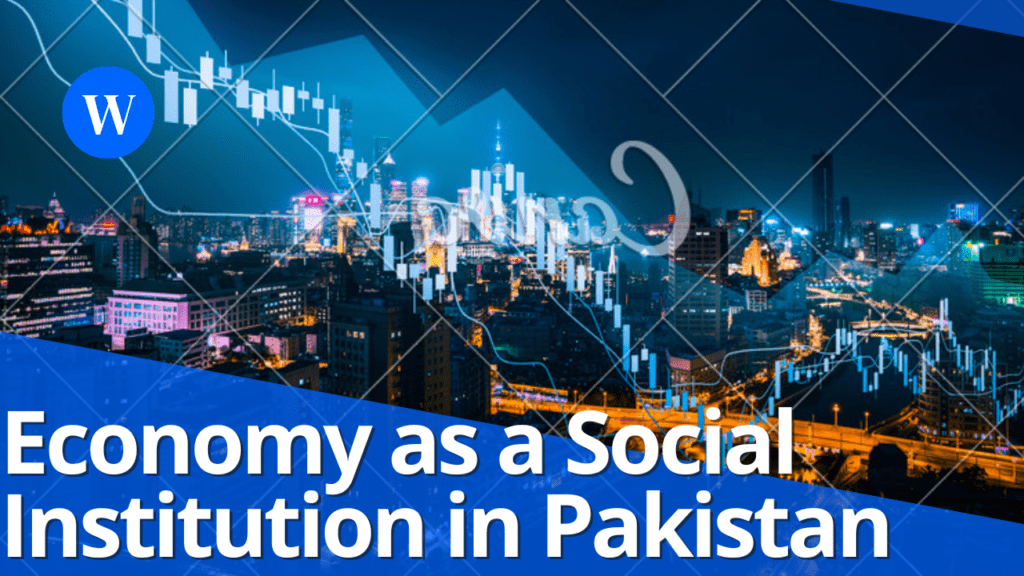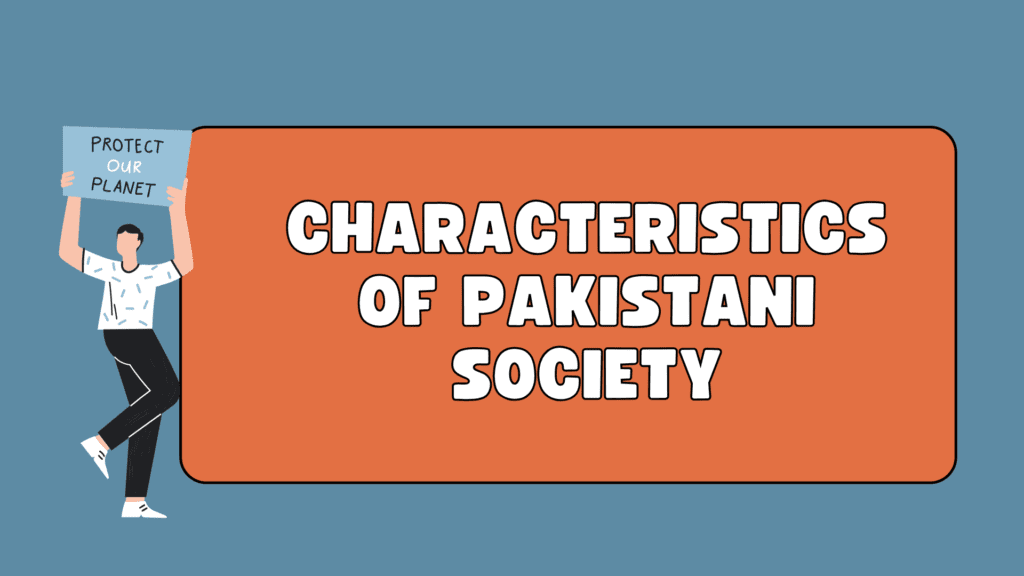The economy is one of the most significant social institutions in any society. It refers to the organized system of production, distribution, and consumption of goods and services. In the context of Pakistan, the economy is not just a financial system but a structure deeply connected with social values, cultural practices, and power relations.
Understanding Economy as a Social Institution
As a social institution, the economy performs vital functions:
-
It provides means of livelihood to individuals and families.
-
It shapes class structures, such as the working class, middle class, and elite.
-
It influences social mobility, determining who rises or falls economically.
-
It affects gender roles, especially in terms of who participates in the workforce.
The economy in Pakistan is influenced by various factors, including religion, tradition, politics, and globalization. It operates within a framework of both formal (registered businesses, industries, banks) and informal (street vendors, home-based work, barter system) sectors.
Some Features of Pakistan’s Economy
-
Mixed Economy: Pakistan follows a mixed economic model, combining capitalist and state-controlled elements. While the private sector plays a major role, the government also intervenes through subsidies, taxation, and regulation.
-
Agricultural Base: A significant portion of Pakistan’s population is engaged in agriculture. Crops like wheat, rice, sugarcane, and cotton are central to both rural livelihoods and national exports.
-
Industrial Development: Industries such as textiles, cement, and fertilizers contribute to employment and GDP. However, industrial development is uneven and concentrated in urban centers.
-
Informal Sector: A large number of people, especially in urban areas, work in the informal economy—without legal protection or benefits. This includes domestic workers, daily wage laborers, and small shopkeepers.
Economy and Social Structure
a. Class System
In Pakistan, economic roles are closely tied to social class. For example:
-
Elite families often own land, factories, or large businesses and have access to higher education and political power.
-
Middle-class individuals typically work in education, healthcare, or government jobs.
-
Working-class people include farmers, laborers, and low-paid workers who often lack job security.
b. Gender and Economy
The economic institution also reflects and reproduces gender inequalities:
-
Women’s labor force participation remains low, particularly in rural areas.
-
Many women engage in home-based work such as embroidery or food preparation, often without fair pay or recognition.
Example: In cities like Lahore and Karachi, women increasingly join the workforce in education, healthcare, and banking. However, in rural areas like parts of interior Sindh or southern Punjab, cultural restrictions often limit their economic participation.
Economic Challenges in Pakistan
Several structural and social issues hinder economic progress:
-
Unemployment and underemployment are high, especially among youth and educated individuals.
-
Inflation affects purchasing power and leads to rising poverty levels.
-
Corruption and lack of accountability limit fair distribution of economic resources.
-
Class disparity is growing, with a widening gap between rich and poor.
Role of Religion and Culture
Islamic values also influence the Pakistani economy:
-
Zakat (charity) is an important religious practice that redistributes wealth.
-
Islamic banking and finance are growing alternatives to conventional interest-based systems.
At the same time, cultural norms like family-based businesses and inheritance systems play a significant role in shaping economic behavior.
Impact of Globalization
Global trends affect Pakistan’s economy through:
-
Export markets for textiles and labor (e.g., overseas Pakistanis sending remittances).
-
International loans and aid, which influence national economic policies.
-
Technological advancement, which changes work patterns and access to global opportunities.
Conclusion
In summary, the economy in Pakistan functions not only as a system of money and trade but as a complex social institution that shapes people’s lives, identities, and opportunities. To understand it fully, one must look beyond numbers and policies and examine how economic activity is embedded in society, influenced by class, gender, religion, and culture. Addressing Pakistan’s economic challenges requires not only technical solutions but also social awareness and structural reforms that promote inclusion, fairness, and sustainability.


